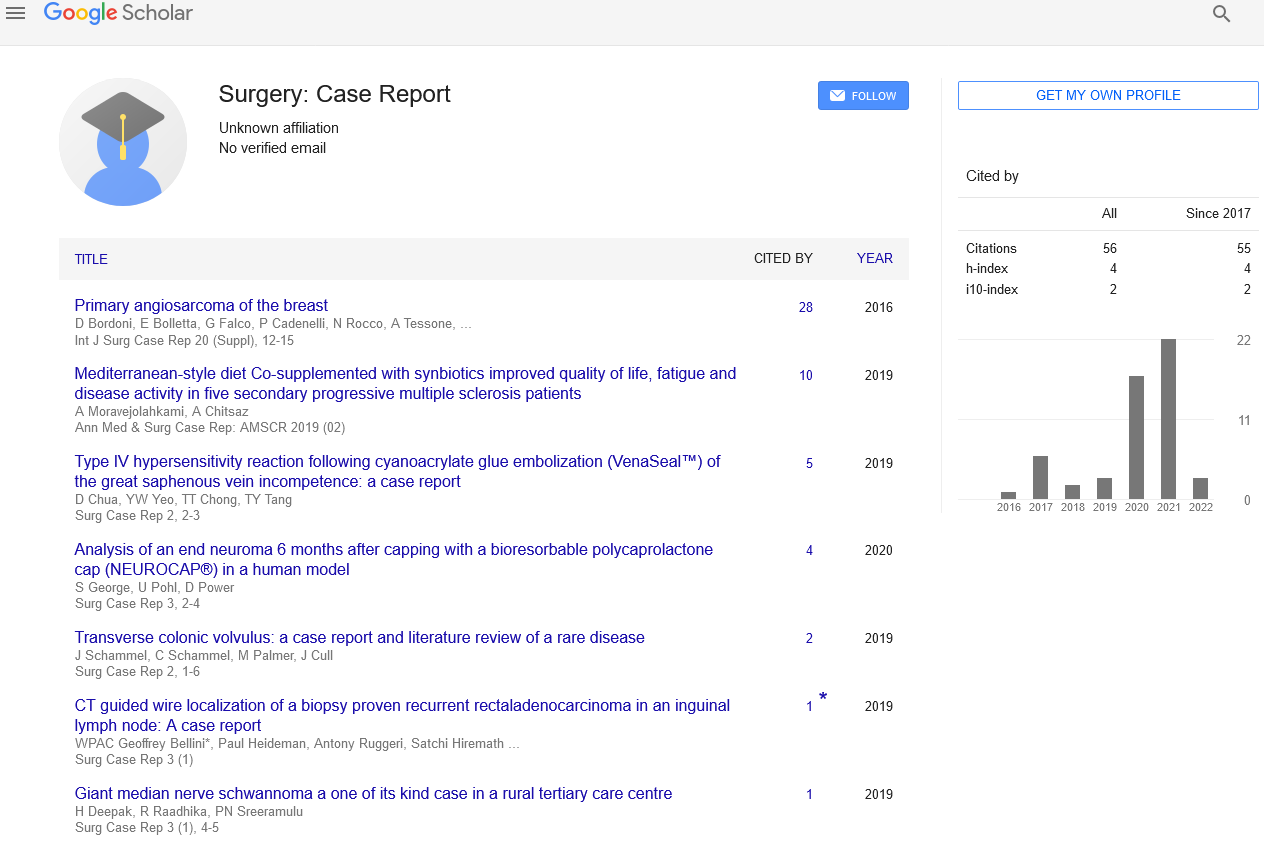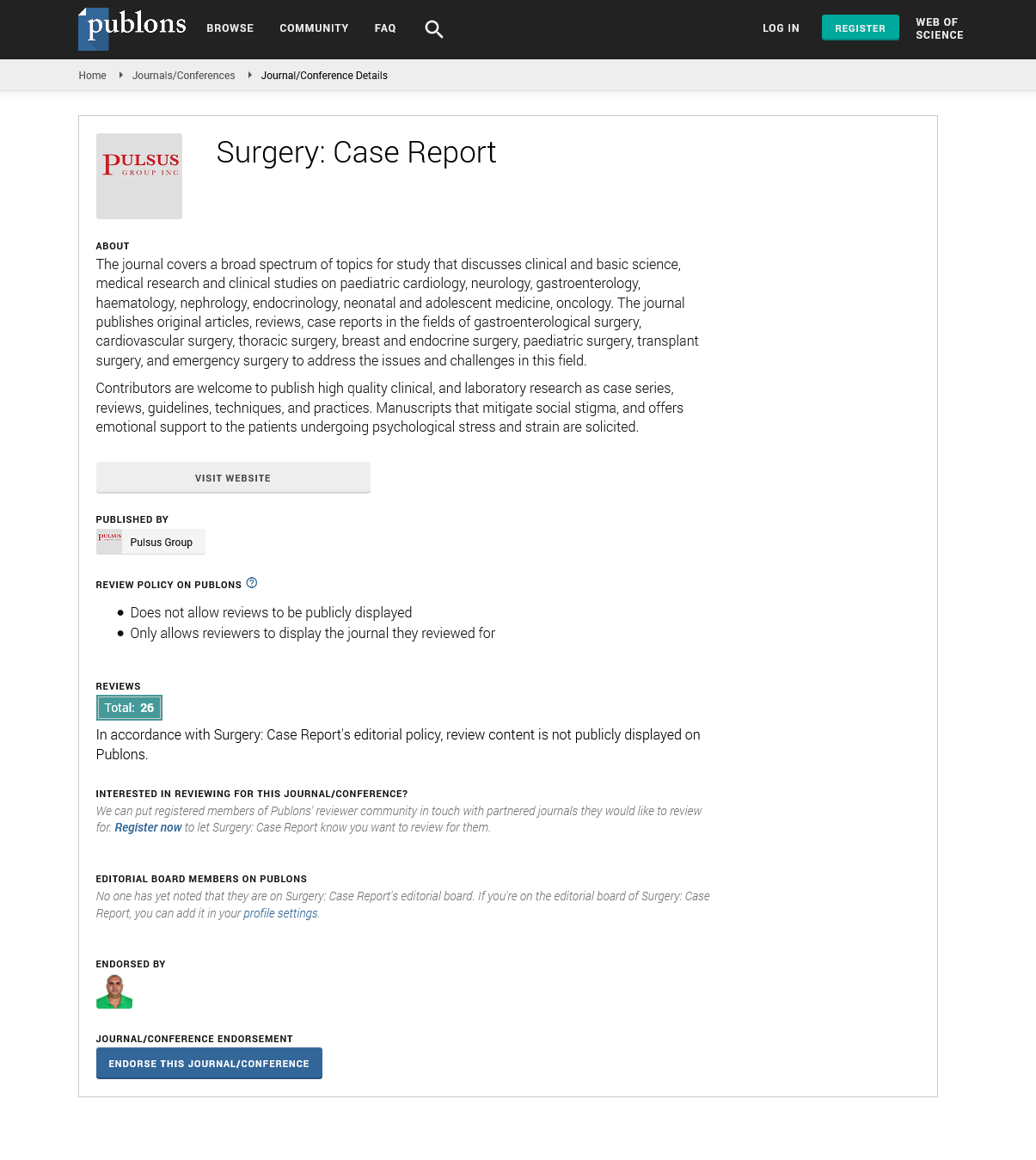Evolution of Micro vascular Surgery: An Overview
Hyderabad, Telangana
, India, Email: badigeru.rita@gmail.comReceived: 07-Jul-2021 Accepted Date: Jul 18, 2021; Published: 25-Jul-2021
Citation: Badigeru R. Evolution of Micro vascular Surgery: An Overview. Surg Case Rep. 2021; 5(4): 2.
This open-access article is distributed under the terms of the Creative Commons Attribution Non-Commercial License (CC BY-NC) (http://creativecommons.org/licenses/by-nc/4.0/), which permits reuse, distribution and reproduction of the article, provided that the original work is properly cited and the reuse is restricted to noncommercial purposes. For commercial reuse, contact reprints@pulsus.com
Commentary
Microvascular surgery arose from the treatment of severe limb trauma in the mid-twentieth century. In several nations, though, there has been a significant change from its usage in traumatized patients to repair of tissue defects post tumour excision over recent years. These modifications had an impact, and the frequency of painful instances has reduced while the percentage of patients receiving micro-vascular tissue transplants has declined. Conventional flap transfers vs. microsurgical free tissue transfers may be used properly and in a reasonable fashion to cause the alterations. After solid understanding of surgical indications, the initial rush in adopting novel procedures waned.
Furthermore, advances in technology such as vacuum-assisted wound care and the use of biologic skin templates have helped to reduce the number of patients requiring microsurgical free tissue transplants. Patients who previously required microsurgical free tissue transfer due to massive damage of skin and subcutaneous tissue, big wound size, and underlying structure pathology can be handled with vacuum-assisted wound care and biologic skin templates, that aid tissue regeneration and epithelialization to narrow the dimensions of wound or tissue deflection. These individuals can now be treated without having to undergo a microsurgical tissue transplant.
Reconstruction of tissue defects post tumour excision has become incredibly common, and several micro surgeons now conduct tissue transplants for these patients more frequently than traumatic patients. Microsurgery indications and procedures in such patients following tumour excision have been developed throughout the years. Micro vascular surgery is embracing more variation in flap design while decreasing donor site morbidity, thanks to increasing attention to the utilization of perforator-based free flap transfers. Repairs in the lower extremities and following oncogenic resection frequently use advancement flaps and propeller flaps. Ultrasound is now routinely utilized in combination with computed tomography (CT) angiography to aid identification of perforators and flap harvesting intraoperative. Thermography using a smartphone is also popular for this reason.
Worldwide, the majority of instances of digit replantation are declining, owing in part to improved workplace safety measures and the employment of robotics to undertake some risky industrial jobs. Digital amputation as a result of industrial mishaps is increasingly uncommon; however it still occurs in rural regions where heavy agriculture implements might result in loss of limbs. Accidents on a daily basis are the leading cause of digital amputation. In Western nations, replanting the extremely distal tip of the fingers is not common. In Asian nations, on the other hand, it is a common procedure. Sensory restoration of implanted fingertip is a key problem, and several western micro surgeons and patients choose good feeling above length, preferring a shorter finger with good touch.
Nonetheless, surgeons all around the world believe that thumbs ought to be replanted or reconstructed since thumb’s function is critical, and its size is critical for pinching and gripping. The requirement for restoration of a missing thumb is certain, but restoration of lost fingers, particularly a portion of a finger when the remaining fingers are intact, is debatable, with the majority of micro surgeons in Western nations believing it is not essential. Toe transfers or vascularized toe joint transfers are commonly utilized for paediatric patients with congenital abnormalities, while vascularized joint transfers in adults are primarily performed in Asian nations. For scaphoid non-union, a new bone-donor location has been proposed, although whether non-union requires vascularized bone grafting is still up for dispute. Cryopreserved finger replantation has been documented, and tissue banking approaches are becoming more common in replantation and microsurgical procedures.
Implants vs. tissue transfer for breast reconstruction is a contentious topic, and new data suggests that breast implants might cause long-term problems. Tissue transfers are being used more often for breast reconstruction, according to the researchers. Nonetheless, individuals with autologous tissue restoration had a significantly worse standard of living than those with implant-based repair. Worldwide, microsurgical tissue transplant for neck and trunk reconstruction is now a regular task for micro surgeons, and this trend is likely to continue.






